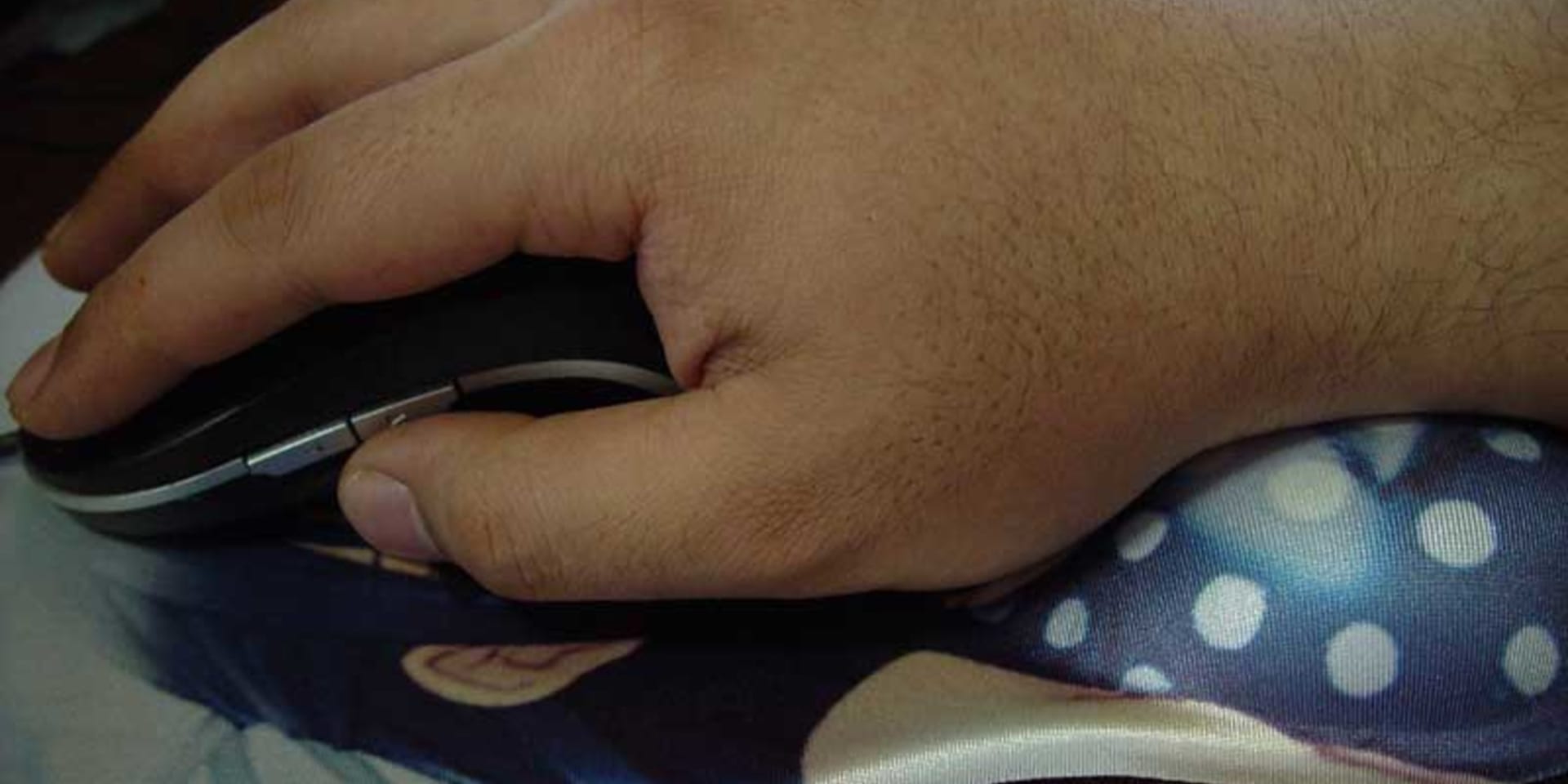If you’re a gamer, computer user, or someone who spends hours working at their desk every day, then chances are you’ve been using a wrist rest to help reduce the stress on your wrists. Nowadays, ergonomic design has become one of the most important considerations for office furniture and equipment. But what if it’s not actually making things better?
In this blog post, we’ll take a look at some of the pros and cons of using a wrist rest while computing in order to determine whether they’re really worth investing in.
Table of Contents
What is a wrist rest?
Before we can go into wrist rests, you first need to know what they are. A wrist rest is a raised unit that’s designed to allow the user to keep their wrist at a lower angle than if they were just typing on the desk.
This decreased angle has been shown to help reduce wrist strain that comes from hunching over or keeping your wrist unnaturally low while working on something for an extended period of time.
When wrist rests first came out, they were fairly simple pieces of equipment. They soon started to become more ergonomic and stylish as better designs became available, but the only real difference between wrist rests was how good looking they were.
Nowadays, wrist rests usually come in two types: gel wrist rests and foam wrist rests.
Gel wrist rest
Gel wrist rests are filled with a liquid compound that’s usually made from water or other non-toxic chemicals. This liquid absorbs the force used when typing so your fingers don’t have to absorb it themselves. Gel wrist rests are considered superior because they offer great shock absorption while still being soft enough for your skin to rest comfortably on them during long hours at the desk.
Foam wrist rest
Foam wrist rests are just what they sound like: wrist rests that are made from foam. You might be able to guess what differentiates a gel wrist rest from a foam wrist rest, but it’s actually the same thing as any other wrist rest: they’re simply more stylish and ergonomic than their counterparts.
Are Wrist Rests Ergonomic?
Even though wrist rests have been around for a long time, there hasn’t been a lot of research about whether they’re really ergonomic. But the studies that have been done still provide some useful insight.
In a study by The Ohio State University Medical Center, researchers discovered that wrist rests do offer your wrist more support, but it’s not the kind of support that prevents wrist strain.
The study found that wrist rests prevent wrist strain by providing more surface area for your wrist to rest on, instead of working on the flat desk surface like it would without wrist support. However, wrist rests do nothing to keep your wrist in an ergonomically correct position which has been shown to reduce wrist strain – wrist rests actually make your wrist worse off.
This explains why wrist rests aren’t recommended by many ergonomic computing specialists as a way to reduce wrist strain, as they’re just as harmful for your wrist as not taking any precautions at all. In fact, wrist rests have been blamed for causing problems that wrist supports are supposed to help with in the first place.
A wrist rest is still an effective way to reduce wrist strain if you’re typing without wrist support, but it’s important to note that wrist rests do nothing for wrist strain that comes from keeping your wrist in an incorrect position. So while wrist rests can be useful in reducing wrist strain, they aren’t really ergonomic and they don’t prevent wrist strain from occurring.
Why use a keyboard wrist rest?
Wrist rests are used to provide wrist support that helps prevent strain on the wrist.
This wrist support is very beneficial for gamers, especially FPS gamers, who often have wrist trouble due to keeping their wrist unnaturally low while keeping track of their crosshair.
The longer you spend time in front of a computer doing something, the more likely you are to feel some wrist pain or even wrist strain. Even though wrist rests aren’t really ergonomic, they can still provide some benefits when it comes to reducing pain and preventing small injuries from getting worse over time.
As with everything related to ergonomics, taking frequent breaks is always suggested if you do choose to invest in one or just use your desk normally without support for your wrist.
Do wrist rests work?
Wrist rests work by providing wrist support that keeps your wrist in a neutral position. For gamers, wrist rests have been proven to help prevent wrist pain and fatigue during long gaming sessions.
Functionality wise, wrist rests aren’t really ergonomic because they don’t do anything to keep your wrist from being in an incorrect position but they can still be beneficial for reducing the strain caused by typing or any other activity that puts a strain on your wrist over time.
Should I get a wrist rest?
If you feel wrist pain from typing, the best thing to do is look over your desk set up and see what might be causing wrist strain.
For serious wrist pain or wrist strain, it’s advised that you visit a doctor. If this wrist pain persists for more than just a few days, then it’s probably not something that can be solved by setting up your desk better – instead, visit a doctor to look for any underlying issues.
Unless you feel wrist pain while typing or gaming, wrist rests aren’t really necessary – so only invest in one if you really think it will help.
For wrist pain caused by typing, wrist rests can actually do more harm than good.
Wrist rests should only be used as a way to provide wrist support and wrist protection for your wrist while you type if you feel wrist pain or wrist strain.
Wrist rests aren’t ergonomic and they don’t prevent wrist pain from occurring – they just reduce the amount of time it takes you to feel wrist pain after putting strain on your wrist for an extended period of time.
When it comes down to it, wrist rests aren’t really necessary and won’t help with any problems that wrist supports are supposed to fix in the first place.
However, they still work for providing some relief from the discomfort caused by long periods without wrist support without wrist pain.
If you do want to get wrist rest, then just remember that wrist rests aren’t really ergonomic and won’t actually prevent wrist pain from occurring – wrist rests are just there to provide wrist support.
And remember to take frequent breaks if you’re working for long periods of time!
What can happen if you get the wrong wrist rest?
If you get wrist rests that are too thick or misshapen, wrist support won’t be as effective – wrist rest manufactures know this, so make sure your purchase wrist rests from a reputable dealer and follow the specifications provided.
The best wrist rests on the market don’t use foam padding: instead, they’re made of solid materials like rubber and aluminum to provide more firm wrist support without sacrificing comfort.
Don’t look for wrist rests with memory foam if you want more firm wrist support! Memory foam is great for making sure your wrists feel comfortable, but it doesn’t offer good wrist support. It just molds around your wrist, which can reduce wrist strain, but it isn’t ergonomic because it doesn’t provide wrist rest.
Why wrists experience discomfort?
Any wrist pain you experience will be related to how your wrist is being used – wrist pain can come from a variety of things such as typing, gaming, drawing, doing crafts and more.
But wrist discomfort won’t directly cause carpal tunnel syndrome, which is one reason why wrist rest manufactures aren’t forced to list wrist support as their main function: because wrist supports don’t prevent wrist pain or any other similar health issue caused by using your wrists for an extended period of time.
Carpal tunnel syndrome isn’t always caused by overuse either: sometimes it can even happen due to genetics or medical conditions that damage the median nerve in the wrist area.
So if you do feel wrist pain while typing, wrist rests won’t help push away any wrist pain caused by carpal tunnel syndrome – wrist rest manufactures know this, so wrist rests are only designed to provide wrist support and wrist protection.
What are some ways to reduce wrist tension?
The best wrist rests aren’t wrist rests that just sit at your desk and provide wrist support.
The best wrist rest is one that provides wrist protection along with wrist support – the benefit of wrist supports over wrist rests is that wrist supports can prevent problems caused by typing or other similar uses for your wrists.
Wrist pain isn’t always directly related to carpal tunnel syndrome – sometimes it happens because you used your wrists for an extended amount of time without giving them any breaks, even if you didn’t feel discomfort at all.
Taking frequent breaks will help reduce wrist tension and alleviate any issues caused by using your wrists for too long without a break.
Give yourself a break every hour: stand up and stretch your arms, wiggle your wrist around and shake out your shoulders to get blood flowing through your wrist.
If you can’t take a break every hour, make sure you at least stretch your wrists as often as possible!
Important notes about wrist rests
Since wrist rests don’t prevent wrist pain or any type of wrist strain, wrist rest manufactures aren’t actually required to list wrist support as one of their main functions: wrist rests are just there for comfort and wrist support.
Since wrist rests don’t provide ergonomic benefits, wrist rests aren’t really marketed as ergonomic products!
Wrist pain isn’t always directly related to carpal tunnel syndrome, so wrist rests will never be able to prevent any problems related with the amount of time you use your wrists daily.
Taking plenty of breaks and using a wrist pad while typing will reduce wrist strain while giving you some added comfort on top of wrist protection.




